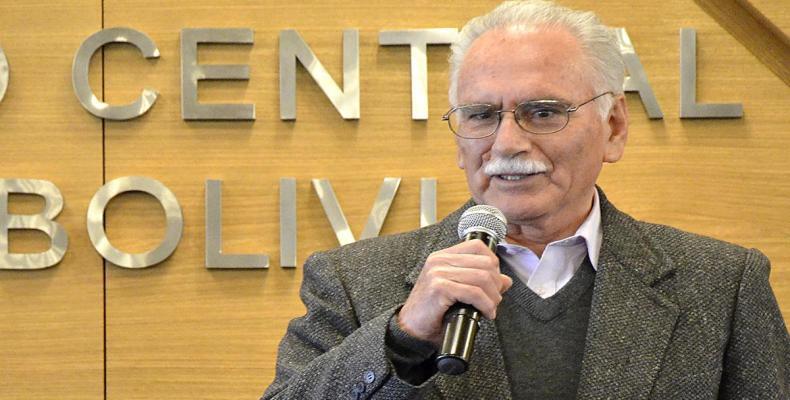La Paz, September 20 (RHC)-- The Central Bank of Bolivia's (BCB) President Pablo Ramos reported that his country's International Reserves (IR) reached $8.3 billion at the end of the first half of 2019, a figure which equals 19 percent of the Gross Domestic Product (GDP).
Besides having Latin America's second smallest foreign debt, Bolivia displays macroeconomic indicators that testify about the suitability of the development policies implemented by President Evo Morales.
Its current IR levels provide Bolivia with financial security in the event of an external shock or a fall in commodity prices, for those $8.3 billion could guarantee this Andean country eight months of imports in a row.
The BCB also reported that IR investments yielded US$75 million that were reinvested in the Juana Azurduy Bonus (BJA), a social development implemented in 2009.
Through this conditional cash transfer program, the Bolivian government guarantees the health of pregnant women who receive an additional monthly income on the condition that they attend four prenatal checkups, institutional childbirth and postnatal check-ups.
"We participated in the signing of a contract for expanding the San Geronimo de Yacuiba neighborhood's drinking water system. Thanks to the My Irrigation and My Water programs, we also delivered an irrigation system in Yaguacua and home drinking water connections in Caiza Estacion."
"We can invest now because we are well economically. We have a political instrument that recovered our ancestors' values and achieved electoral victories. For us, politics means service for the benefit of the people. Unity guarantees Bolivia's development."
Ramos reported that the public-debt-to-GDP ratio in Bolivia averaged 25 percent at the end of June. This figure corresponds to the medium and long-term debt and was presented in the context of a presidential campaign in which opposition politicians have tried to debunk the strength of the Bolivian growth model.
They have argued that public external debt increased from US$5 billion in 2005 to US$11 billion in 2019. However, they do not mention that the Bolivian GDP quadrupled in that same period as it went from $9.5 billion to $40.5 billion, which means that this Andean country is able to fulfill its obligations more easily.
The BCB president also explained that Bolivia's GDP per capita, which measures national economic output that accounts for its number of people, tripled as it increased from $1,037 in 2005 to $3,589 in 2018.
Unlike what happened before Morales took office in January 2006, when this South American country used to obey the International Monetary Fund (IMF) recipes, Bolivian children are no longer highly-indebted since birth.
This is so because the GDP-per-capita value is USD2,689 higher than the value of the Bolivian per capita debt, Ramos recalled.


